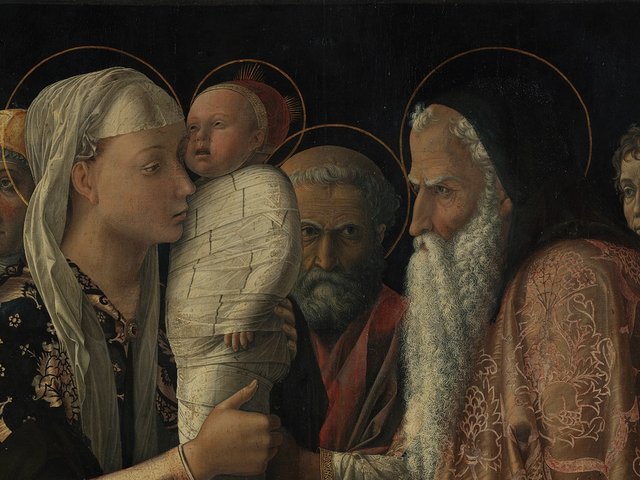“A Bellini exhibition with Bellini alone would have been misleading,” says Neville Rowley, the co-curator of an exhibition in Paris focusing on the thematic and technical links between the 15th-century Venetian artist and his contemporaries.
The show at the Musée Jacquemart-André will include 50 works in total drawn from private and public European collections, with 21 pieces by Giovanni Bellini himself, including The Mocking of Noah (around 1515) from the Musée des Beaux-Arts et d’Archéologie in Besançon and The Annunciation (around 1475) from the Museo Nacional Thyssen-Bornemisza in Madrid.
The curators will demonstrate how Bellini continued to reinvent his style during his lifetime, drawing on works by Andrea Mantegna, like Ecce Homo (around 1500), and especially on the realism of Antonello da Messina’s painting technique as seen in Portrait of a Young Man (1478), loaned by the Gemäldegalerie in Berlin.

Bellini's The Annunciation (around 1475) Photo: © Museo Nacional Thyssen-Bornemisza. Madrid
In the foreword to the catalogue, Bruno Monnier, the president of Culturespaces (the commercial organisation behind the show), outlines how Bellini “embodies the transition between the Gothic period and the Renaissance itself and is considered the master of Madonnas”.
Rowley argues that the exhibition will throw new light on Bellini thanks to an “important reassessment” of the artist’s early career by the Italian academic Giacomo Calogero. Scholars have said that remarkably little is known about Bellini’s young life, though a recent publication, Young Bellini by Daniel Wallace Maze (Yale University Press, 2021), offers recontextualisation of the archival evidence related to Bellini's early years. It even goes so far as surmising that he was possibly born a decade earlier than widely thought.
In the exhibition catalogue, Calogero gives a revised date for two works on loan from the Galleria Sabauda in Turin, Annunication and Birth of the Virgin, demonstrating further that Bellini’s artistic practice was flourishing sooner than previously thought. Calogero states that both paintings, co-created with his relatives Jacopo and Gentile, were made in 1453 (other scholars say the works were created in the 1460s). Calogero bases his assertion on the fact that Jacopo received payment for the works from the commissioning body, the Venetian brotherhood La Scuola Grande di San Giovanni Evangelista, the same year.
• Giovanni Bellini: Crossed Influences, Musée Jacquemart-André, Paris, 3 March-17 July




